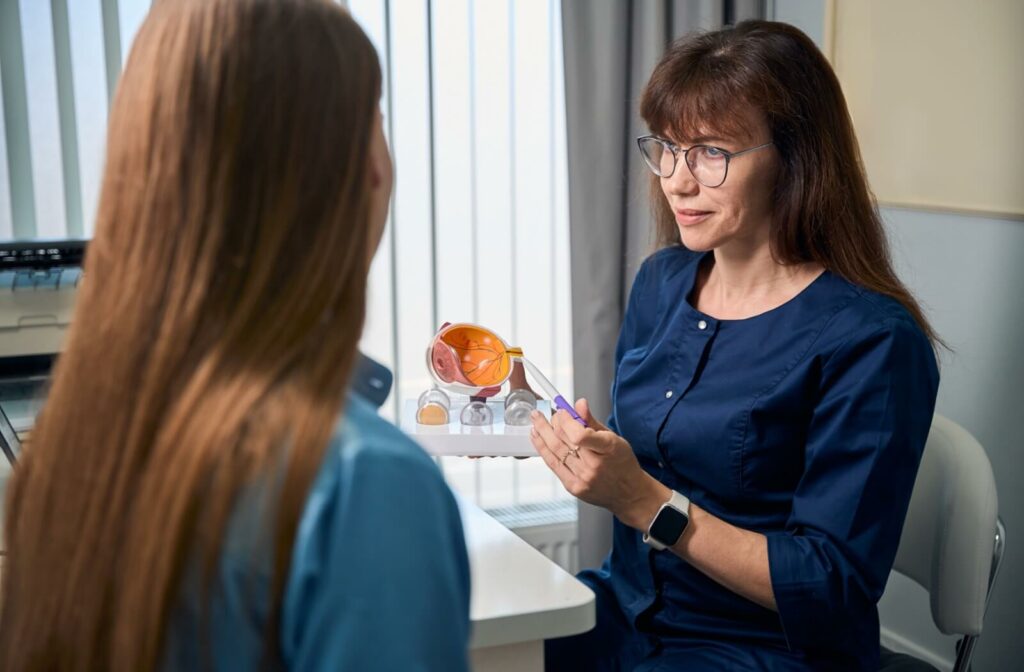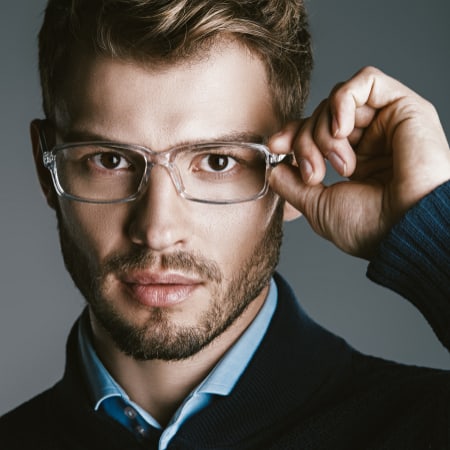Lazy eye, or amblyopia, is a common vision condition that often develops during childhood. It occurs when the eyes do not work properly together which leads the brain to favor one eye over the other. This causes the vision in one eye to be weaker than the other. Over time, this can impact visual development and coordination if left untreated.
But the big question is, is there a “too late” when it comes to treating lazy eye? While early intervention is ideal, treatments like vision therapy and surgical intervention mean that people of all ages can have hope for visual improvements.
What Is Lazy Eye?
Amblyopia, often referred to as “lazy eye,” is a condition where the eyes do not work properly together which results in the vision in one eye not developing as well as the vision in the other eye. This means one eye can see more clearly than the other eye due to abnormal eye-brain connections. Amblyopia can manifest as:
- Strabismus: When the eyes are misaligned.
- Refractive errors: Uneven prescriptions between the two eyes (e.g., nearsightedness, farsightedness, or astigmatism).
- Deprivation: Conditions like cataracts that block vision in one eye during early childhood.
Without treatment, lazy eye can lead to permanent vision issues. However, with the right interventions, both children and adults can see improvements.
The Best Time to Treat Lazy Eye
While there is some evidence that lazy eye can be treated at any time, the younger it is identified, the better the visual outcomes are.
Early Childhood (Ages 3–7)
The most effective time to treat lazy eye is during early childhood, typically between ages 3 and 7. At this stage, the brain’s visual pathways are still developing and highly adaptable. Interventions such as:
- Atropine eye drops to blur the stronger eye temporarily.
- Corrective glasses to address refractive issues and promote binocularity.
- Vision therapy tailored to improve focus and coordination and binocularity.
Routine eye screenings during infancy and preschool years can help detect amblyopia early, ensuring timely treatment.
Middle Childhood and Tweens (Ages 8–12)
While the window of opportunity is best during early childhood, middle childhood is not too late. Research has shown children can still respond positively to treatments with slightly more intensive approaches, such as combining vision therapy with maximizing binocular vision through therapeutic lenses..
Adolescents & Teenagers
For a long time, it was believed that the brain’s plasticity diminished too much during the teenage years to see noticeable improvement in amblyopia. However, newer studies have shown that teens may still benefit from certain therapies. Techniques like vision therapy—especially when adapted for older patients—can improve eye coordination, reduce strain, and boost depth perception.
Can Lazy Eye Be Treated in Adults?

While it’s true that amblyopia treatment in adults is less predictable than in children, it’s far from impossible. Advances in eye care and innovative therapies have opened doors for adult patients seeking help for lazy eye.
While achieving perfect 20/20 vision may not always be the goal, treatments can still enhance quality of life. Adults often find improvements in depth perception, eye strain, and overall visual coordination.
Treatment Options for Adults
For adults, here are a few effective lazy eye treatments:
- Customized vision therapy: Structured exercises aimed at strengthening visual skills and the brain-eye connection.
- Surgical options: For addressing cosmetic concerns linked to strabismus, eye alignment surgery may be considered.
The success of these treatments depends on factors like age, the severity of amblyopia, and the patient’s commitment to the therapy plan.
Vision Therapy & Its Role in Treating Lazy Eye
Vision therapy is a personalized program of eye exercises designed to improve the brain-eye connection and enhance overall visual function. Vision therapy can include:
- Activities to improve focus and coordination.
- Tools like prisms or filters to train the eyes.
- Exercises that encourage the eyes to work together instead of one taking dominance.
This approach is particularly beneficial for older children, teenagers, and adults who want to explore treatment options beyond traditional methods like patching. Vision therapy often works alongside other treatments to achieve the best possible outcomes.
Why Early Detection Matters
The earlier amblyopia is detected, the greater the chances of successful treatment. This is why routine eye examinations starting as early as six months of age are crucial. Regular screenings allow eye care professionals to catch subtle issues before they progress, giving children the best opportunity for improvement.
That said, even if you’re noticing symptoms of lazy eye as an adult, it’s never too late to prioritize your eye health.
Taking the First Step Toward Better Vision
Lazy eye doesn’t need to define a person’s vision for life. Whether you’re a parent concerned about your child’s eyesight or an adult looking to improve your own, proactive steps can make a big difference.
At Eye Q Optometry, we’re here to guide you through the process with expert care and cutting-edge treatments designed to fit your unique needs. Book an appointment with us today to explore your options and take control of your visual health.










